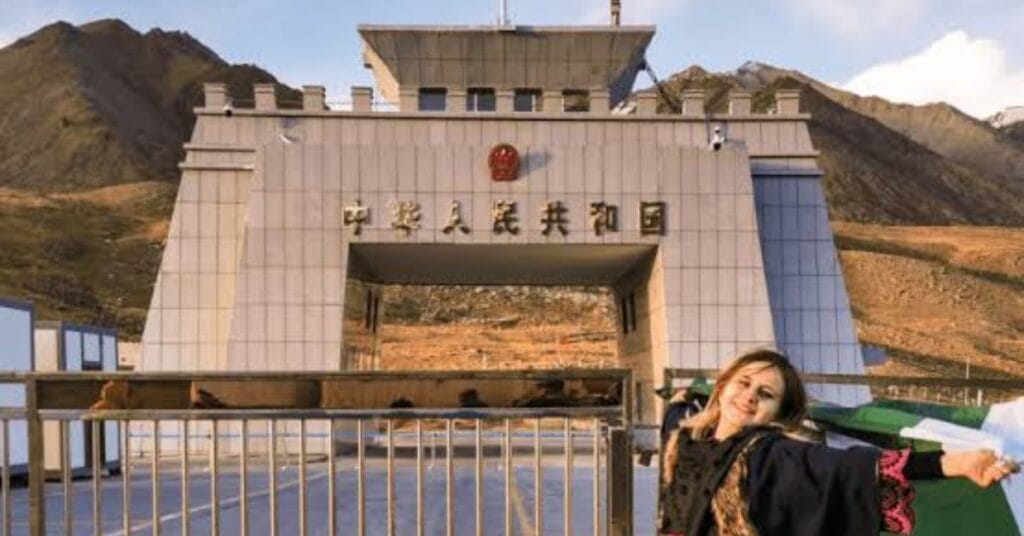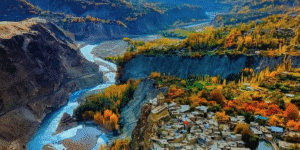Imagine yourself standing in the middle of majestic mountain views. The scene provides you with peace, and the tranquility of the place fills your heart with calm and soothes. However, that place also serves as a border between two countries, connecting them. It is of great height and also a trading path for the countries. Does such a place exist? The Khunjerab Pass—that’s what we are talking about!
Is that place worth visiting? What value could it hold? If it is in the mountainous region, then how is it possible to carry out trade even in harsh weather conditions?
Do you want all the answers to these questions? If yes, then stick with us in this guide so that you will know all the knowledge about this place.
Also, Read Skardu in October | Fall Nature’s Masterpiece Awaits!
Table of Contents
ToggleAbout The Khunjerab Pass
Khunjerab Pass (often called the ‘Gateway to China’) is the highest international border crossing on the planet. That stunning mountain pass of more than 4,693 meters (15,397 feet), which sits between Pakistan and China, is now part of this new world record. Khunjerab is a name that is derived from two Wakhi words; Khun meaning blood and Jerab meaning a creek coming from a spring or waterfall. It is hence referred to as the Valley of Blood, reflecting history and challenging terrain.
Where is The Khunjerab Pass Located?
The route Khunjerab Pass lies in the Gilgit-Baltistan region of Pakistan along the border line of Pakistan and China in the Karakoram Range. In many ways, this Border crossing is important as a gateway for the economy of both Pakistan and China. This also demonstrates the trust between the two countries and the Pak-China friendship.
Read Karakoram Range -All You Need To Know
Reason to visit the Khunjerab Pass
Ripped of natural beauty, visiting the Khunjerab Pass is one of the most compelling reasons. The pass shows rugged mountains, lush meadows, and crystal-clear streams. Dramatic scenery is provided by snow-capped peaks, including the formidable Muztagh Ata. The flora and fauna to wildlife such as Himalayan ibex, snow leopards, and marmots, there is a diversity to catch.
Distinctions of the Khunjerab Pass
Several things to note about the Khunjerab Pass: it is the highest international, paved border crossing in the world, and this is the highest point on the Karakoram Highway. Completed in 1982, the road through this pass has now replaced previously unimproved Mintaka and Kilik passes as the chief means of crossing the majestic Karakoram Range.

Highest ATM in the World
This combines administration through the National Bank of Pakistan (administration) which holds the world’s highest ATM and is linked to China UnionPay and the domestic 1LINK switch.
Times to Visit the Khunjerab Pass
Normally the pass is open from late spring to early autumn, from May to October. The pass is closed because of heavy snowfall during the winter months, which are harsh anyway. The border is open Monday to Friday only. It remains open from 11 a.m. to 8 p.m. Beijing time (9 a.m. to 6 p.m. unofficial Xinjiang time) from its Chinese side. The Islamabad time with which it is open is from 9 a.m. to 5 p.m. (3 hours behind Beijing time). The routine procedures on the exit side are done in the mornings and on the entry side in the afternoons. Chinese and Pakistani holidays as well as Islamic holidays are marked by both sides of the border remaining close to the border. Checking ahead to see if your travel will fall on a holiday is a smart thing.
Cultural Significance of The Khunjerab Pass
Lying on the ancient Silk Road, the Khunjerab Pass became culturally significant as the road served as the ancient network of trade routes between East and West. Near the pass, travelers could explore the historical caravanserai, a place where merchants stopped to rest on their grueling journeys. The local Wakhi people, long residents of the trekking zone, open a window to their ancient cultural heritage and traditional way of life.
The Khunjerab Pass | What’s the Best Way of Getting There?
The distance (approx.) is 36 km from Passu to Sost, and it takes 45 minutes to 1 hour, approx. It could be that from Sost another 30/35 km more, and it takes roughly up to 1 hour to reach the Khunjerab National Park entry point. It’s about 50 km from the National Park entry gate to the Khunjerab border pass and takes about 2 hours, depending on how fast you walk. This means the whole round trip from Passu to the border and back is a full day, about 8 or more hours.
Read Do Not Miss Passu Cones Hunza: The Majestic Spires of the Karakoram
Khunerjab Pass National Park Entry Point
Before heading, all travelers must stop at the entry to Khunjerab National Park. At the moment, the entry fee is $40 for foreigners and 500 rupees for locals. Depending on the day, this often leads to arguments about why that price is so wildly different. First, you have to get into the office and buy an entry ticket. Payment is cash only.
Adventures at the Pass
Khunjerab Pass is an ideal destination for adventure seekers. This high altitude setting provides opportunity for many activities.
Hiking
The region offers several trekking routes that enable hikers to trek the stunning scenery and learn the unique culture of the Wakhi people. Shimshal Valley is a popular trek.
Cycling
The pass’s high-altitude terrain provides cyclists the opportunity to test themselves by pedaling it. For the fainthearted, the journey isn’t for anyone—but the views are exhilarating.
Wildlife Watching
The past and its environs are a wildlife haven. Watch out for ibex, the elusive snow leopard, and other mountain creatures.
Photography
As for photographers, Khunjerab Pass has a few of the best views out there. There are plenty of photo subjects, from the play of light on the mountains to the local culture to the different wildlife.
Tips for The Visit
Visa Requirements
The only way Khunjerab Pass is accessible to Pakistani travelers is by getting a permit from the Pakistani government.
Altitude Sickness
Containing high altitude, travelers must be careful of falling victim to altitude sickness. Before ascending to the pass, it’s best to properly acclimatize.
Pak-China Signed Protocol
Under this protocol, the trade between the two countries takes place through the Khunjerab Pass from 1 April to 30 November, annually. So, visit accordingly.
Also, Read How To Apply for a Passport Online.
Final Thoughts on The Khunjerab Pass
The Khunjerab Pass, the gateway pass to China, provides a breathtaking crossing of natural beauty, cultural significance, and adventure. The pass towers in from the peaks to the valleys; it’s got history as part of the ancient Silk Road and is a must-visit destination if you are looking for that unforgettable experience. From a hiker, a cyclist, someone with a loose interest in wildlife, or anyone at all who is a lover of spectacular landscapes, the Khunjerab Pass has something for everyone.
It furthermore acts as an essential economic contact between Pakistan and China for the promotion of commerce and contact among them. Thus, this place is amazing to explore because of its strategic importance and natural beauty.
Also, don’t forget to leave us the most interesting fact you learned from the above discussion. Your opinion matters!
Read the Complete List of Mountains in Pakistan and their Ranking
FAQs about The Khunjerab Pass
Why is the Khunjerab Pass an important crossing point for borders?
The world’s highest international border crossing at the Khunjerab Pass betrays a political but remains an essential economic artery between Pakistan and China as it crosses their border.
What are some of the natural attractions that would make up part of what you believe represents the essence of the Khunjerab Pass?
High up in the Khunjerab Pass, and despite the high altitude are rugged mountains, meadows, crystal streams, and snow-capped peaks—beautiful nature in a high place.
For what is the Khunjerab Pass culturally important?
Part of the former Silk Road, the Khunjerab Pass has cultural importance. The major trade routes between East and West; the caravanserai of this city can be seen by the visitors and heard about the local Wakhi culture.
What can be done by visitors at Khunjerab Pass?
Hiking, cycling, wildlife watching, and photography of people visiting the Khunjerab Pass.
What are the things to know in case we visit the Khunjerab Pass?
These include the process of permission granted by the Pakistani government, getting acclimatized to the altitude, and preparing for changed weather. And most importantly, the pass is an open and close system in terms of the season.







